Nationality Venezuelan Role Artist | Name Carlos Cruz-Diez Notable work Physicromie Series | |
 | ||
Born August 17, 1923 (age 102) ( 1923-08-17 ) Artwork Physichromie No. 209 Similar People Jesus Rafael Soto, Julio Le Parc, Josef Albers, Georges Seurat, Simon Bolivar | ||
Carlos cruz diez retrospective at muac mexico city
Carlos Cruz-Diez (born August 17, 1923 in Caracas) is a French-Venezuelan artist considered to be one of the greatest artistic innovators of the 20th and 21st centuries. He is believed to be one of the fathers and greatest figures of kinetic and op art, and has been called a 'master of color' and line, adept at creating fluid, participatory visual experiences. His work invites philosophical conversation on ontology and perception.
Contents
- Carlos cruz diez retrospective at muac mexico city
- Carlos cruz diez transchromie art basel 2009 www miazine com
- Early life and education
- Career
- Influences
- Social and political context
- Description of style
- Interpretation
- Legacy
- Exhibitions
- Selected works
- Awards
- References
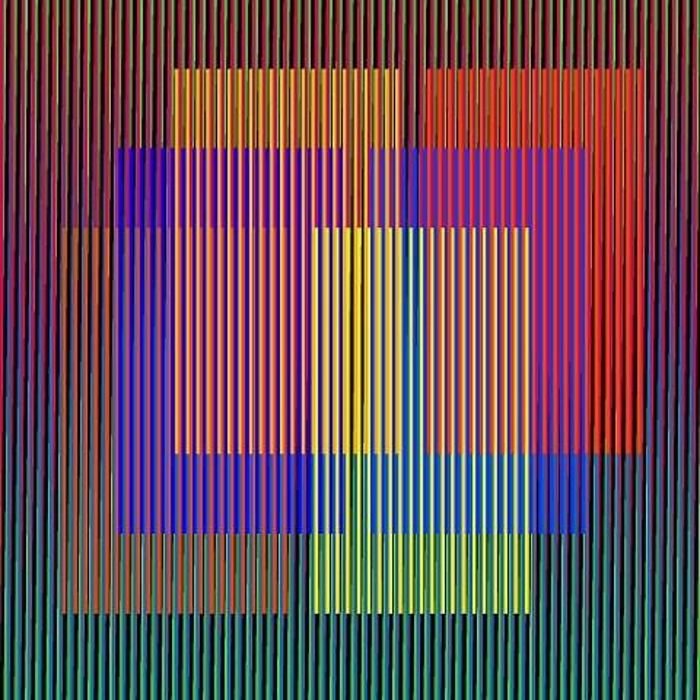
His body of work has established him as one of the key 20th-century thinkers in the realm of color. Cruz-Diez’s research has contributed to a new way of understanding color phenomena in art, greatly expanding its perceptual universe. In his works, Cruz-Diez shows that through interaction with the viewer, color becomes an autonomous, evolving reality, devoid of anecdotes, which develops in real time and space.

He has spent his professional career working and teaching between both Paris and Caracas. His work is represented in museums and public art sites internationally, such as Museum of Modern Art (MoMA), New York; Tate Modern, London; Musée d’Art Moderne de la Ville de Paris; Centre Pompidou, París; Museum of Fine Arts, Houston; Wallraf-Richartz Museum, Colonia, and others. He is represented by three American galleries: Sicardi Gallery in Houston, Texas, Moka Gallery in Chicago, Illinois, and Maxwell Davidson Gallery in New York City.
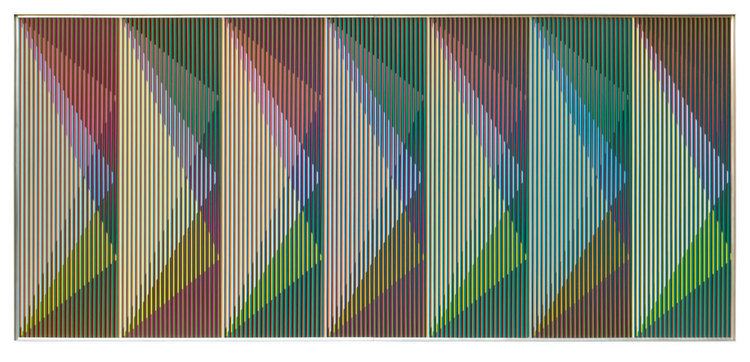
Carlos cruz diez transchromie art basel 2009 www miazine com
Early life and education
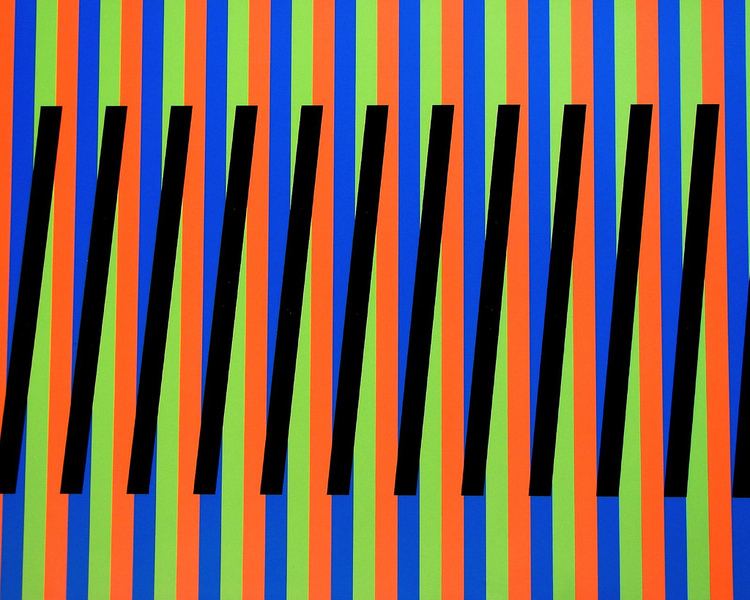
Cruz-Diez was born in Caracas, Venezuela.
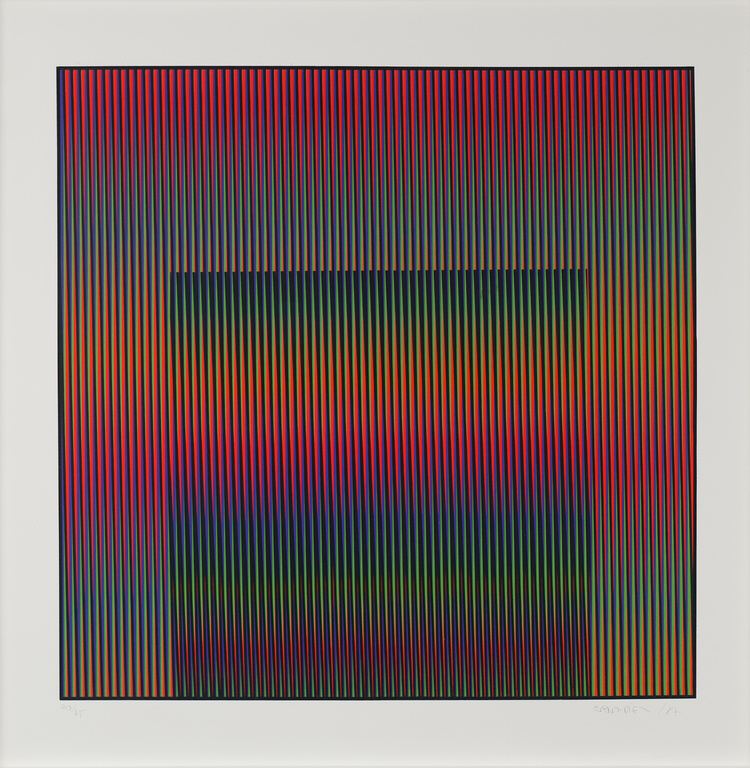
Cruz-Diez attended the School of Plastic and Applied Arts in Caracas in 1940 and received a degree in art education and manual arts in 1945.
Career
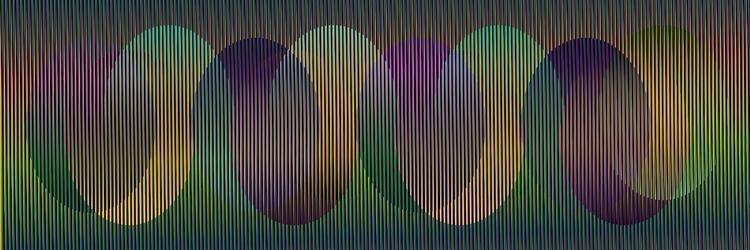
From 1944 to 1945 he worked as a publications designer for Creole Petroleum Corporation. From 1946 through 1951 Cruz-Diez was art director at the McCann Erickson Advertising Agency in Caracas and New York in 1947.
In 1957, he returned to Venezuela and worked at his studio, Estudio de Artes Visuales, and started investigating the role of color in kinetic art. He also worked as a graphic designer for the Education Ministry publications, Caracas. During 1958–1960, he served as the Assistant Director and Professor at the Caracas School of Fine Arts. During 1959–60, he also taught Typographie and Graphic Design at the School of Journalism, Central University of Venezuela, Caracas. In 1965, Cruz-Diez the Centre culturel Noroit, Arras, France, as a graphic designer. During 1972–73, he taught Kinetic Techniques at the École nationale supérieure des Beaux-Arts, Paris and Unité d'enseignement et de recherche. From 1973 to 1980, he served as a member of the jury for diploma of École nationale supérieure des Beaux-Arts. From 1986 to 1993, he was the Titular Professor and Director of the Art Unit of the Institute of Advanced Studies (IDEA), Caracas.
Influences
During Cruz-Diez's time in school, he studied the work of Georges Seurat and Josef Albers, both artists who experimented with color relationships, aesthetics and perception. While in Europe, he was not only influenced by the Art Movements, he also was influenced by the European surrounding, particularly the plant life, which differed so much from the plant life in his native Venezuela. (concepts of art) He could have, quite possibly been drawn to the variance in color and form. Cruz-Diez is often associated with two Venezuelan Kinetic Artists, Jesús Rafael Soto and Alejandro Otero. All three artists share aesthetic similarities in structure and form, and are considered to have secured Venezuela's position in the international art world. Although Cruz-Diez arrived in Paris ten years after Soto, their national and artistic connections are apparent.
Social and political context
After World War II several Venezuelan artists were able to study abroad, often in Paris. At the same the culture began to change because of industrialization and urbanization, which was directly tied to Venezuela’s exportation of oil. The new challenges faced by the development of modernity presented a receptive audience for Cruz-Diez, which allowed for a break in the traditional artists of Venezuela. (Traditionally painters before 1950) The new cultural climate, which was receptive to the Kinetic Artist, was directly linked to the new technological advancements represented by the Kinetic artists. During 1948–1958 Venezuela existed under a military rule – and the Venezuelan Kinetic artists were often associated with elite social group because they were embraced by the government and supported and commissioned by industry and corporations. Cruz-Diez’s Op Art became popular with the political elite, often because the art lacked any political message.
Description of style
Cruz-Diez has consistently worked through his career focusing solely on color, line and (viewer) perception. His visual style can be consistently identified throughout his work spanning his entire career. His work contains an element in which the viewer actively participates in viewing the work because the color changes and presents a sensation of movement as the relative position of the viewer changes. Cruz-Diez uses the moiré effect to produce this sensation of motion by his particular composition of lines. Because the image of his work changes as the viewer changes locations, he refers to this changing effect of the image as “vibrations.” In 1959 Cruz-Diez started working in radiation of color, essentially colored light – which is a form of wavelengths, and abandoned paint as a medium. Cruz-Diez often referred to environment and events and part the experience of viewing his art. Because he was working with light and perception, his environment most likely needed to be controlled. Since the perception of the piece changes with the viewer movement, the individual images presented were considered events. Interesting enough these were terms used by the Fluxus group, who were also internationally based, and working around the same time, the late fifties and early sixties.
Throughout his career Cruz-Diez has focused on four types of self-defined op art Categories: Physichoromies, Choromointerferences, Chromosaturations, and Transchromies. All of his color-based experiments focus on variations of the observer’s position in relation to the work, the light directed at the work, and the relationship between the colors presented. Of the above mentions, seemingly, the most popular and possibly most archival is the Physichromie, which are all entitled “Physichromie” with a number listed after to indicate its uniqueness. (see list and images) He also created sensory deconditioning rooms, which provided an experience that included visual, sound and tactile experience, a total phrenological experience.
Interpretation
Cruz-Diez is often associated with the Kinetic Art Movement, which relies on movement, particularly that of the object. As an Op or Operational Artist, Cruz-Diez relies on the movement of the viewer rather than the movement of the art object itself. The Op Movement stems directly from the Kinetic Movement, and is often considered a part of the Kinetic Movement as well. Cruz-Diez has been consistent throughout his career in pursuing his interest in colour, and presenting his formal sensibility. His work presents geometric abstracted forms with a strong emphasis on colour, to create a visual experience. Because of Cruz-Diez's attention to colour, line and space (environment), his work has significant form, as defined by Clive Bell. Cruz-Diez breaks down color and form to their elemental qualities, and engages the viewer on an emotional level without the use of naturalistic imagery. Bell defined aesthetic emotion as a unique response to the viewer’s experience while engaging with a work of art. Cruz-Diez proactively engages the viewer in this experience by the constantly changing line and color.
Legacy
On December 17, 1997, the Carlos Cruz-Diez Print and Design Museum in Caracas, Venezuela, opened to the public. The museum offers education and resources to the general public to expand artistic audiences, while supporting contemporary Venezuelan artists. The museum will strive to create a, “graphic image of the country,” Carlos-Cruz Diez serves as founder and president. One of Cruz-Diez's sculptures, constructed in Caracas, Venezuela, was recently demolished to make way for a scenic view of a port. It was noted that the structure was covered in graffiti, not maintained by public works and became more of an eyesore than a work of art. After Cruz-Diez offered to send his own studio apprentices to help with the restoration of the work, to Cruz-Diez's and several art advocacy groups' disapproval, the Caracas government continued with the demolition.
Recently, a contemporary London-based Venezuelan artist, Jaime Gili, exhibited "Homenaje a Cruz-Diez, 2006" in Riflemaker Gallery, Soho, NY using colored tiles and metal sheets. The pieces of tiles came directly from Cruz-Diez now defunct public structure, "Fisicromia Homenaje a Don Andres Bello, 1982. This homage to the Venezuelan icon represents the impact Cruz-Diez has left on the new generation of emerging artists with cultural ties to Venezuela. In contrast to the isolated incident of the demolition his public work, he has been commemorated by the museum, designed a piece for the Caracas International Airport. He specializes in kinetic art, as well as trying to promote Venezuelan art into the international art scene. Cruz-Diez is also said to have served as Miuccia Prada's inspiration for a recent succession of Prada boutiques that pay homage to the artist. Designed by Italian architect Roberto Baciocchi for the brand's locations in London's Westfield Stratford City, Qingdao, Harbin, and Shenyang, the architecture features backlit vertical compositions that jut out in high relief to create an optical illusion, with their series of aluminium, steel and golden blades producing a moiré effect often associated with the artist.
In 1997, Cruz-Diez was appointed for life the president and member of the superior council of the "Museo de la Estampa y del Diseño Carlos Cruz-Diez" Foundation, Caracas. In 1998, he was appointed as an honorary member of Academia de Ciencias, Arte y Letras, Mérida, Venezuela. Carlos Cruz-Diez has had individual exhibitions in several museums and galleries, including Museo de Bellas Artes in Caracas (1955), Museum am Ostwall in Dortmund (1966), XXXV Venice Biennale in Italy (1970), and Museo de Arte Moderno in Mexico (1976). He was a special guest at the 1986 Venice Biennale.
His works have recently sold in US auction at $55,000 He is represented in museums internationally, and is a pioneer in artistic color theory and perception. Despite his lack of political content in his work, he still remains an international Venezuelan icon, because of the progress contributed to the fine and graphic art worlds in Caracas and abroad. It has been noted that Kinetic Art is to Venezuela what Muralism is to Mexico.
By January 2014, Carlos Cruz Diez and, the Venezuelan designer, Oscar Carvallo showed their collection at Paris Fashion Week. Stage design and art merged letting Cruz Diez’s creation be present in the outfits designed by Carvallo.
Because of his attention to light and color aesthetics he belongs to a lineage that includes all colorists, such as Seurat, Cézanne, Albers, and Frank Stella.
